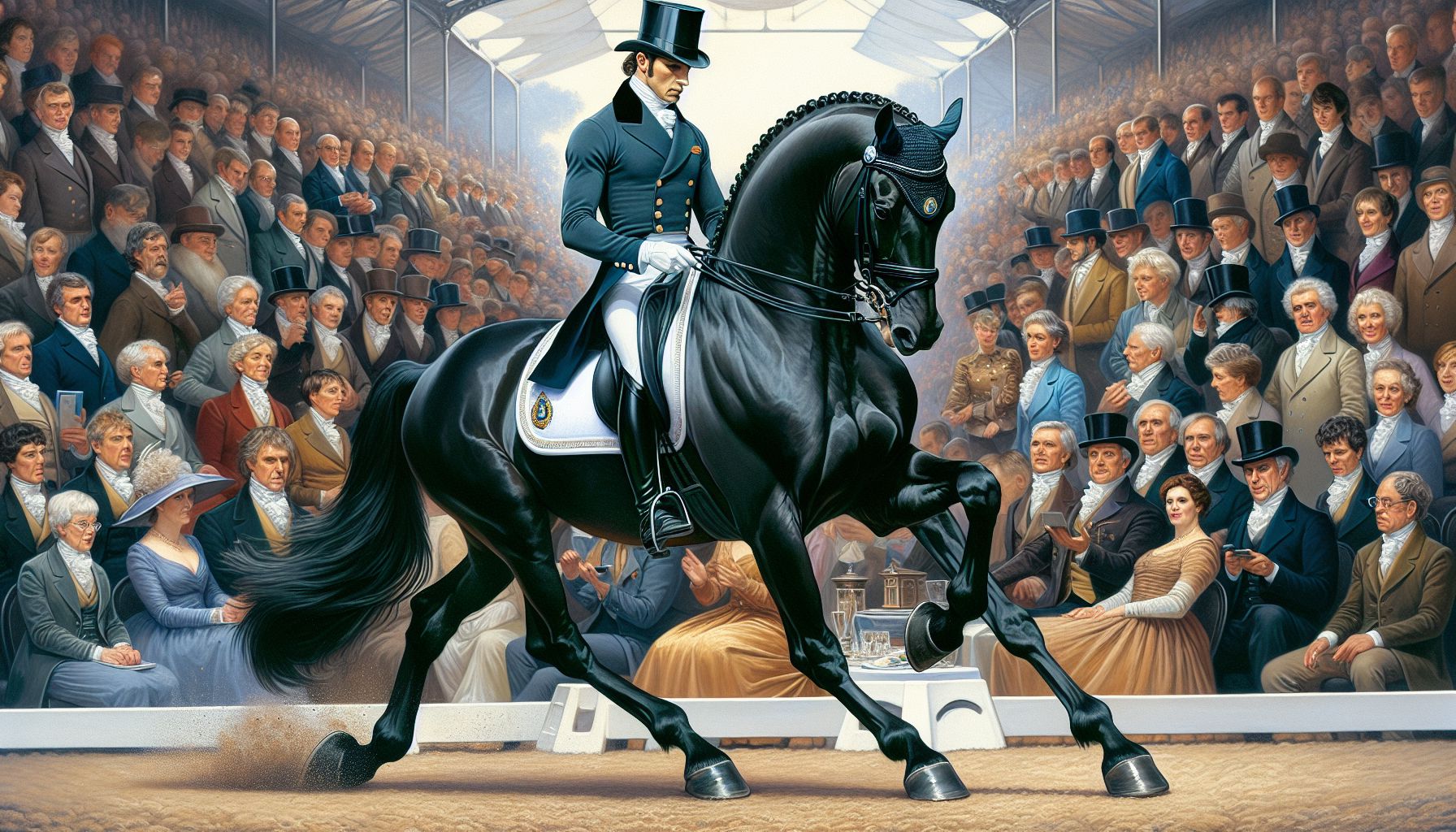Image Source: Unsplash
If you’ve ever wondered what goes into the world of horseback riding beyond the traditional galloping and jumping, prepare to be intrigued. Welcome to the captivating realm of dressage, an elegant equestrian sport that combines artistry, grace, and the extraordinary bond between horse and rider. With its origins rooted in military training, dressage has evolved into a beautiful dance between a horse and its rider. So, let’s loosen up, grab a cup of tea, and delve into the world of dressage together.
The Ballet on Horseback
Imagine a spectacle where a horse and its rider perform seamless movements, demonstrating perfect harmony and precision. Dressage, derived from the French word “dresser” meaning “to train,” is often referred to as “horse ballet” or “the art of riding.” It involves a series of intricate, precisely executed movements performed in harmony with the horse, leaving spectators in awe.
Dating back to ancient Greece, dressage initially served as a way to prepare horses for combat. However, over the centuries, it evolved into a stunning display of horsemanship, showcasing the deep bond between horse and rider.
The Basics: Understanding the Levels
Dressage competitions are divided into levels, ranging from basic to advanced. Each level requires riders to showcase their skills by executing a predetermined set of movements in front of a panel of judges, who then assign scores based on precision, balance, fluidity, and harmony.
At the introductory level, riders will perform basic movements such as walking, trotting, and cantering, while more advanced levels introduce complex maneuvers such as flying changes, pirouettes, and piaffes. As the rider progresses through the levels, the movements become more demanding and require increased finesse and control.
The Training Process: Bring on the (Horse)power
Dressage training is not only about honing the rider’s skills but also about developing and strengthening the horse’s athleticism and obedience. It requires patience, dedication, and a partnership built on trust and mutual understanding. The training process involves a combination of exercises on the ground and in the saddle, aiming to enhance the horse’s balance, flexibility, and responsiveness to the rider’s aids.
The “aids” refer to the subtle cues given by the rider, conveyed through the rider’s seat, legs, and hands. Dressage riders aim to establish an almost telepathic connection with their horses, leading to a harmonious and responsive partnership. Precise coordination between the rider’s aids and subtle shifts in the horse’s weight and body position bring forth the breathtaking movements that make dressage so captivating.
So, What’s in a Dressage Arena?
Dressage performances take place in rectangular arenas, measuring 20 meters by 40 meters or 20 meters by 60 meters for more advanced levels. The arena is lined with white fences and letters marking specific points along the perimeter, helping riders navigate and execute the required movements precisely.
These letters, often accompanied by amusing mnemonics, enable riders to map out their routines and transitions. For example, “A” marks the center of the short side, while “K” and “M” indicate the corners. By using the letters as reference points, riders can precisely position their horses and execute movements at the appropriate spots.
The Art of Movements: From Leg Yield to Passage
While the intricacies of each dressage movement are vast, here we’ll cover a few fundamental ones that highlight the true essence of horse ballet.
1. Walk and Trot: These are the foundational gaits, with the walk being a four-beat movement and the trot a two-beat diagonal gait. Riders focus on achieving a relaxed yet elastic stride, maintaining a consistent rhythm, and promoting the horse’s engagement with its hindquarters.
2. Canter: Known as the “lovely lady of gaits,” the canter is a three-beat movement with a natural rocking motion. Riders strive for a smooth and balanced canter, ensuring that the horse maintains a clear distinction between the right and left leads.
3. Leg Yield: This lateral movement showcases the horse’s ability to move sideways while maintaining forward momentum. The horse moves diagonally, crossing its legs over and propelling itself with its hindquarters.
4. Half Pass: A more advanced lateral movement, the half pass combines impulsion, balance, and collection. The horse moves diagonally across the arena, maintaining engagement and flexion throughout the body while bending away from the direction of travel.
5. Passage: Often referred to as the “king of the movements,” the passage is a highly collected trot with extremely elevated action. The horse showcases remarkable suspension, allowing the audience to witness their immense power and strength.
The Dressage Community: From Beginner to Grand Prix
Dressage boasts a vibrant and inclusive community, welcoming riders of all levels, ages, and backgrounds. While some may aim to compete at the highest levels, known as the Grand Prix, others find joy in the journey of training and creating beautiful moments with their equine partner.
The elegance and poise of dressage attract enthusiasts from various walks of life. The sport fosters a supportive atmosphere, where riders come together to learn, grow, and celebrate their achievements. Dressage clinics, shows, and exhibitions provide ample opportunities for riders to connect with like-minded individuals and share their passion for this unique equestrian discipline.
Connecting with the Extraordinary
In the realm of dressage, where horse and rider move as one, there’s an indescribable connection that unfolds. It’s a language beyond words, spoken through the subtlest of cues between two beings. There’s something truly profound about witnessing the elegance, precision, and partnership that erupts on the dressage stage.
So, next time you find yourself captivated by the boundless beauty of horse dance, take a moment to appreciate the unwavering dedication and tireless teamwork that dressage embodies. It’s a symphony of movement where art and athleticism dance together, reminding us of the extraordinary bonds we form with these majestic creatures.
